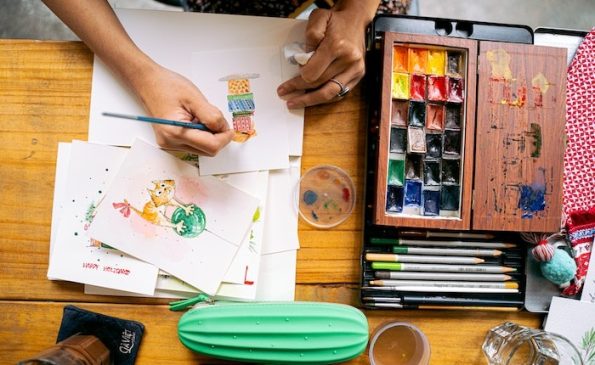Art is not limited to two dimensions. By incorporating transformative techniques, artists can bring depth and texture to their artwork, creating visually captivating and tactile pieces.
In this article, we will explore various transformative techniques that can elevate your artwork and unleash your creativity.

Exploring Embossing
Embossing is a transformative technique that adds raised or recessed designs to a surface, bringing texture and depth to your artwork. One popular method is heat embossing, which involves using embossing powder and heat to create a raised, glossy effect. The process begins by stamping an image or applying a clear embossing ink on your surface, then sprinkling embossing powder over the wet ink. The excess powder is tapped off, and a heat tool is used to melt and set the powder, creating a raised and embossed design. The result is a visually stunning and tactile element that adds interest and dimension to your artwork. Experiment with different embossing powders, colors, and techniques to achieve unique textures and effects that will truly make your artwork stand out.
Delving into Engraving
Engraving is a transformative technique that involves cutting or incising a design onto a surface. This technique allows artists to create detailed and precise lines, adding depth and dimension to their artwork. Artists can explore different approaches to achieve desired textures and effects with various engraving methods such as etching, drypoint, or woodcut. It requires patience and precision, but the results can be truly stunning.
Unleashing the Power of Collage
Collage is a versatile technique that involves combining different materials, textures, and elements to create a unified composition. By layering and juxtaposing materials such as paper, fabric, found objects, and textures, artists can add depth and visual interest to their artwork. Collage offers endless possibilities for experimentation, allowing artists to create unique and textured pieces that tell a story or evoke emotions.
Discovering Sculptural Techniques
Sculptural techniques open up a world of creativity and expression by bringing artwork to life in three-dimensional form. Artists can explore a wide range of materials, from traditional clay to unconventional options like wire, metal, or recycled materials, to shape and mold their artistic visions into tangible sculptures. This art form offers a unique and immersive experience for both the artist and the viewer. Sculptures can be appreciated from different angles, allowing viewers to engage with the artwork’s depth, texture, and intricate details. Whether it’s a small figurine, a larger-than-life installation, or anything in between, sculptural techniques allow artists to create captivating and tactile art pieces that captivate the senses.
Playing with Paint and Texture
Painting is not limited to brushes and canvases. By incorporating texture mediums and additives, artists can create unique surfaces that add depth and dimension to their artwork. From impasto techniques, where paint is applied thickly to create textured surfaces, to experimenting with different tools and textures, artists can push the boundaries of traditional painting to create visually captivating pieces.
Enhancing with Embellishments
Incorporating embellishments into artwork is a fantastic way to add texture, depth, and visual interest. Beads, sequins, or other small objects can be strategically placed and attached to create focal points or enhance the overall texture of a piece. These embellishments can be applied to a wide range of artistic mediums, from paintings and mixed media collages to textile and fiber art. The combination of different materials and elements not only adds visual appeal but also introduces a tactile quality that engages both the eyes and the sense of touch. By carefully selecting and arranging embellishments, artists can create dynamic and captivating artwork that captures the viewer’s attention and invites them to explore the intricate details and unique textures. Whether it’s the shimmer of sequins, the sparkle of beads, or the dimension created by other small objects, the use of embellishments allows artists to elevate their artwork to a whole new level, making it a feast for the senses and a truly immersive experience.
Conclusion
Transformative techniques offer endless possibilities for artists to bring depth and texture to their artwork. Whether through embossing, engraving, collage, sculpture, textured painting, or the use of embellishments, artists can push the boundaries of traditional art forms and create visually captivating and tactile pieces. Embrace experimentation, explore different techniques, and unleash your creativity to transform your artwork into multidimensional masterpieces. Let texture and depth be the keys to unlocking a new world of artistic expression.

